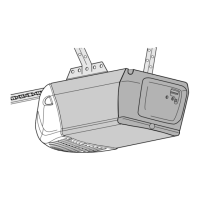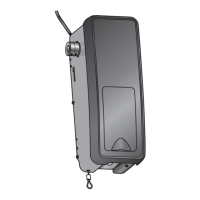Chapter 2: Technical Characteristics
6 | Page DOC-S0508-1R14-IMEI02 • Technical Manual • Issue
Industry, such standards will eventually be put in place. In Europe High Performance Doors must
meet the EN 13241-1 classification. Chart 2-1 differentiates the different class and criteria were
applicable.
Classification Chart 2-1
Class 0 1 2 3 4 5
Water permeability NPD
30 Pa
(.63psf) 50 Pa (1psf) >50 Pa /1psf
Wind load (static) NPD
300 Pa
(6.3psf)
450 Pa
(9.4psf)
700 Pa
(14.62psf)
1,000 Pa
(21psf)
>1,000 Pa
(21psf)
Wind permeability NPD
24 m³/h/m²
14.13 ft³/m/ft³
12 m³/h/m²
7.06 ft³/m/ft³
6 m³/h/m²
3.53 ft³/m/ft³
3 m³/h/m²
1.77 ft³/m/ft³
1.5 m³/h/m²
0.88 ft³/m/ft³
NPD: No performance determined
2.2.3. Description of Criteria
The follow section gives a brief overview on the individual criteria’s of the EN Standards and how
to decipher the results.
Water permeability
o Test that determines the water permeability and determines at what wind pressure the
door remains water tight
Example: Class 1 = Water tight up to 30 Pa (.63psf) of pressure. At higher pressure,
water enters through the door. Refer to Chart 2-1 for the other Class pressure ratings.
Wind Load (resistance)
o Test that determines to what wind pressure, in Pascal, the door resists in the closed
position.
Example: Class 1 = the door resists in the closed position 300 Pa (6.3psf) of
pressure. Refer to Chart 2-1 for the other Class pressure ratings.
Wind permeability
o The quantity of air, in m³/h/m² (ft³/m/ft²), which passes through the door, measured
pressure of 50 Pa (1psf).
Example: Class 1 = a loss through the door of 24 m³ (14.13 ft³) of air per hour and m²
(ft²) of door. 144 m³/h (84.76ft³/m) of air will pass through a Class 1 door of 6 m²
(64.5ft²) in size.
Safety during opening
o Test to check if the door creates no danger in terms of cuts, sliding, pressure, etc…
during operation
Mechanical resistance
o Control of the mechanical aspect of the door.
Unintended movements
o Control of the forces needed to manually open the door.
Thermal resistance
